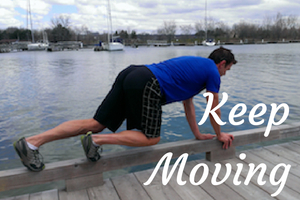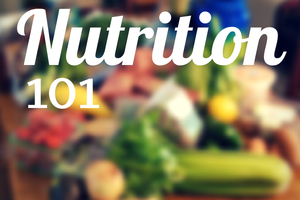 If you’re trying to get back into shape, keep it simple. People tend to have an ‘all-or-nothing’ attitude when it comes to fitness, and that’s why many fail. You shouldn’t have to push yourself to extremes. You don’t need a fully-researched, complicated plan before you begin. And you don’t even need to “join” something. What you need is to move. Here’s some Fitness 101 for you!
If you’re trying to get back into shape, keep it simple. People tend to have an ‘all-or-nothing’ attitude when it comes to fitness, and that’s why many fail. You shouldn’t have to push yourself to extremes. You don’t need a fully-researched, complicated plan before you begin. And you don’t even need to “join” something. What you need is to move. Here’s some Fitness 101 for you!
Walk 20 Minutes a Day:
Here’s an easy place to get started. Walking is good for your waistline, your blood pressure, your stress levels and your brain. Plus, it costs nothing and you’ll get outside more. Walk to the store when you’re only picking up a few items (and carrying is a great exercise too). Take the stairs. De-stress with an after-dinner stroll. Hold a ‘walking meeting’.
Many experts say to aim for 10,000 steps a day. I find that a bit like counting calories — it’s interesting to track once in a while, but it’s no way to live. Instead, aim to walk for at least 20 minutes a day — all at once or broken up into segments.
Sprint Intervals Once a Week:
We should walk for distance but run for speed. Note I say run, not jog. While jogging may be better than no movement at all, there’s nothing natural about it. It’s a made-up exercise. If you don’t believe me, watch some kids playing and observe how they run. In fact, most kids can’t jog unless they’re taught how, while running fast comes naturally to them.
Ditch the treadmill, headphones and fancy running gear and just head outside. Try walking for a bit, then really “open it up”. Your body will let you know when you have to slow down again. It should feel good! No stress, no boredom, no stopwatch and natural scenery everywhere.
Run in short intervals. Try sprinting for just 15 seconds, then walk for 15. Repeat. Do this and gradually build up your endurance to 5 minutes. Experienced runners can go up to 10 minutes. Sprint intervals only need to be done about once a week to be effective.
Bodyweight Exercises 3 x a Week:
Being able to push and pull your own bodyweight is an essential and practical skill. Again, stick to the proven basics for maximum results. You don’t need a fancy routine — just some pushups, pullups and squats.
Scale pushups by doing them from the knees or by doing them off a wall. Maintain a flat back and keep your elbows tucked into your sides.
For pullups, mix up your grip (overhand, underhand, mixed) and make sure you use a full range of motion (chin over the bar and arms fully extended at the bottom). Scale pullups by jumping up to the bar and lowering yourself or by assisting yourself with your feet by standing on a box or chair. You’ll need access to a pullup bar, but playgrounds and even tree branches make great substitutes. You can also do body rows to scale a pullup. Use a rope, strap or even a towel — loop it over the bar and pull yourself from a more horizontal angle (with your heels on the floor) to effectively lower your bodyweight.
To squat, keep your weight solidly on your heels. With your torso upright, push your hips backwards before you bend the knees. Then lower yourself down so that you effectively squat between your legs (feet shoulder-width apart), reaching below parallel before reversing the direction. Keep your knees tracking over your toes, but don’t allow them to extend beyond in front. Practicing a full-depth squat is a great mobility and strength exercise.
You can put a simple workout together using a 1-2-3 ratio with the above three movements (i.e. 1 pullup to 2 pushups to 3 squats). Try doing 2 pullups, 4 pushups and 6 squats. Or 5 pullups, 10 pushups and 15 squats. Repeat 5 times. Don’t fly though the movements, do them with control and with proper breathing. Fitter people can try this routine for 10 minutes or even longer (up to 20).
Lift Some Weights Twice a Week:
Lifting heavy things is good for us. It makes us strong in a way that bodyweight exercises can’t, and it’s a perfectly natural and instinctive thing to do. It not only increases strength, it’s good for bone density (ladies, that’s why you need to lift heavy too). If you have access to a barbell or a set of dumbbells, use them for compound (multi-joint) movements. Deadlift. Squat. Press. Stick to the basics — you don’t need bodybuilding exercises or curls to be fit.
When strength is the goal, build up how much you can safely lift over time. Trying to add 5 pounds to your previous lift attempts is a great way to get started. And keep your sets short — 5 reps at a time is perfect.
Even if you don’t have access to any weightlifting equipment, there are plenty of alternatives. Lift some heavy rocks. Deadlift a 20 litre water bottle. Even resistance bands can have their place in training and get you started.
If you don’t have much experience in lifting or are prone to injury, be sure to get some instruction from a qualified professional.
Work on Mobility Often:
We tend to neglect joint mobility work, but it’s one of the factors that can contribute to a long and healthy life. If you want to move pain-free for many years, you’ll want to practice and train your mobility. Joint mobility can be done daily, and you don’t need a big block of time to do it all at once. Waiting in your car at a stoplight? Roll your head around and work your neck mobility. Bend your hands and fingers back towards your forearms and work on your wrist mobility. Standing in line? Lift one leg slightly and draw a circle with your toes to work on your ankle mobility.
Play!
Play with your kids. Throw a ball for your dog. Take up a sport. This is likely one of the biggest factors that contributes to longevity — having a creative spirit for play. Get outdoors in nature and move! Your body and brain will love you for it.




